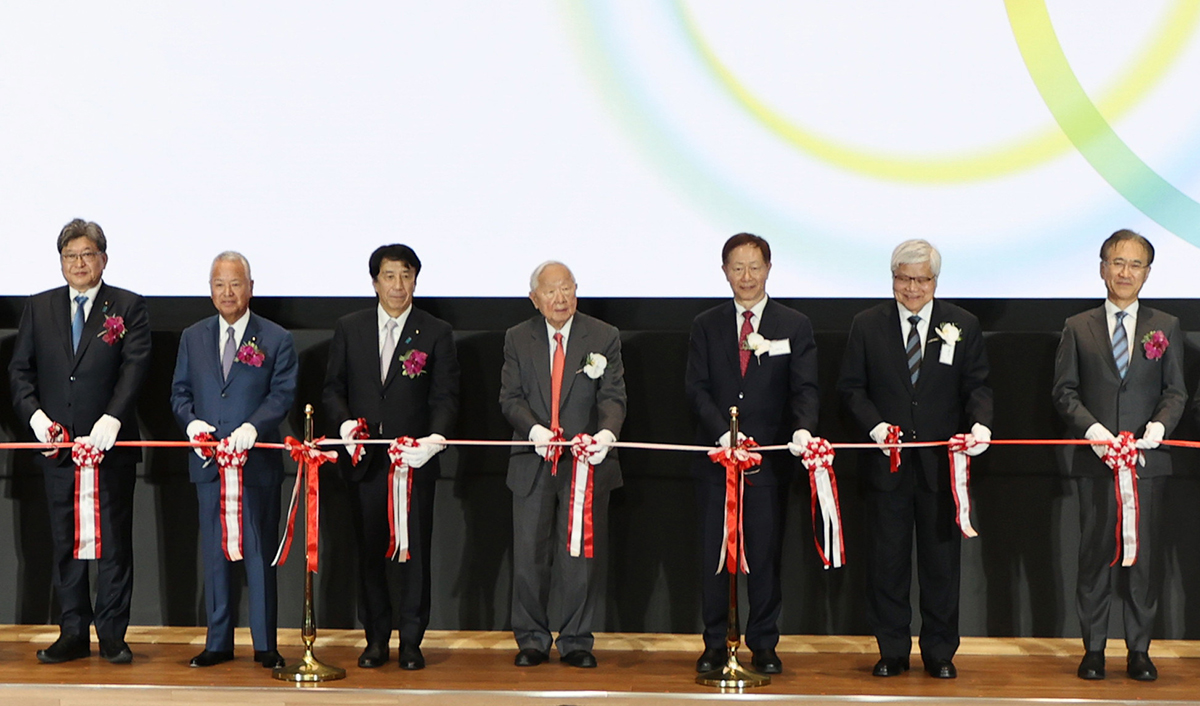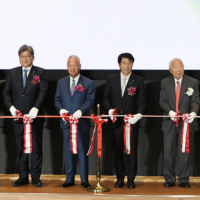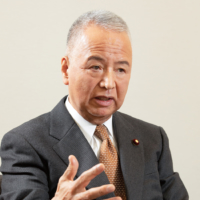As countries around the world continue to invest extensively in the semiconductor sector, Japan is accelerating the revival of its own chip industry, aiming not just to catch up with its peers, but to become a major chipmaker that can contribute to ensuring the stable supply of chips for the global market.
The Japan Times interviewed Akira Amari, former secretary-general of the ruling Liberal Democratic Party and the founder and honorary chairperson of the party’s semiconductor strategy promotion league. He was one of the first to advocate that semiconductors would change international power relations and to push the need for a strategic revival of the domestic chip industry.
In the late 1980s, Japan was a major maker of semiconductors and home appliances. “Back then, semiconductors were made by a section in electronics manufacturers merely as a part of their products,” Amari said. However, over time they evolved into a crucial component that is now so essential that entire social systems depend on them to function.
“Chips today don’t just operate vacuum cleaners and televisions. They are turning the world into an electronically controlled society. With this change, semiconductor sections became independent from electrical appliance makers and other manufacturers in the rest of the world,” he said. Companies dedicated to making semiconductors began to flourish in various countries.
In fact, it became increasingly uncommon for companies in those countries to possess the in-house capabilities required to manufacture every part of a product. Rather than a single entity making the entire product, each component, such as a semiconductor, was produced by a dedicated supplier and then assembled piece by piece into the finished product.
Japan lagged in this shift. Amari noted that Japan is now at a make-or-break point, in that it can either become an independent semiconductor supplier or a country dependent on others for what is essentially running society.

Amari worked together with other like-minded lawmakers to persuade the government into again becoming a major maker of microchips. In 2021, they launched an LDP group dedicated to promoting semiconductor strategies and positioning microchips as a national strategic material.
“Today’s cutting-edge semiconductors are nothing like those of decades ago. We are talking about single-digit nanometer-sized circuit lines,” he said. A nanometer is a billionth of a meter.
Becoming a receiver rather than a maker of semiconductors would mean leaving Japan’s digital infrastructure almost entirely dependent on other countries’ technologies.
Many advanced technologies, including autonomous driving, quantum computing and artificial intelligence, also rely on microchips.
“The credibility of semiconductors is the credibility of society. Semiconductors are the foundation for nearly all aspects of social security in the modern world. That is why creating a supply chain among allies from the perspective of both economic and military security is important,” Amari said. “More than 90% of high-end logic semiconductors are shipped worldwide through the Taiwan Strait. How much impact would the world suffer if a naval blockade were enforced in the area for some reason?”
In the midst of this revival plan, IBM approached the government about the possibility of mass-producing IBM-designed chips in Japan.
“IBM wants to be a user, not a manufacturer, because their business is shifting toward providing computing services using those semiconductors. At the same time, they are aware of Japan’s strong manufacturing technology and capability,” Amari said.
However, existing Japanese companies were reluctant to try.
“What IBM was asking for was state-of-the-art chips” for which no one knew whether mass production was even possible, he said, implying the companies were not to blame.
Rapidus, a Japanese chip manufacturer supported by the government, decided to headhunt the nation’s best semiconductor engineers to respond to IBM’s request.
“From a list of the top 100 engineers’ names and affiliations, we contacted each one of them and asked if they wanted to participate in the game to get back on top in semiconductors. Most of them joined Rapidus,” Amari said, noting his satisfaction with the result. “We encouraged the team by saying that the future of the entire nation depends on them, and they will make history if they succeed in doing this.”
The engineers have been training at IBM’s research center in the U.S. to acquire the skills necessary for mass producing its new semiconductors.
“They have proven to be extremely efficient and capable, which has impressed IBM,” he said.
But what are the chances that Japan, with so many years absent from this field, will be successful and lead the world again?
“If we were to build a new technology on top of the existing one, we wouldn’t stand a chance of catching up. But the 2-nanometer chip technology is something almost entirely different from conventional semiconductor technology.” Amari replied.
Indeed, the evolution of semiconductors is not just about keeping up with the latest technologies, such as artificial intelligence. Reducing their energy consumption, for example, has become a must. Since every sector of our lives, from our consumption and infrastructure to administrative, medical and education services relies on advanced microchips, a critical power shortage would bring our lives to a halt.
Given the vast amounts of electricity being used by data centers, the risk of chronic power shortages already haunts many countries, Amari explained.
“That is why we need to accelerate the miniaturization of semiconductors and increase their speed. One-tenth of the current size is not enough. We are looking at one one-hundredth or one two-hundredth. One of the technologies that is expected to make it possible is the optical semiconductor, a field where NTT, Japan’s telecommunications giant, takes the lead,” he said.
He also touched on the importance of maintaining the capability to make legacy chips.
“In recent years, we saw the U.S. imposing export controls on high-end chips and chipmaking equipment to China. I instantly knew that it would lead to China’s move to dominate the supply chain of the legacy chips as revenge. As we all know now, this is what happened, and we need both advanced and legacy chips for today’s society to function,” he said.
Another complication is that semiconductors are diversifying, Amari noted. “For example, various kinds of semiconductors are involved in sensor technology.” He explained that sensors play the role of our five senses to capture information, and different kinds of semiconductors take it from there.
“Image sensors, in which Sony excels, convert visual information into digital data and send it as a signal to memory, where memory chips are at work. Logic semiconductors process data accumulated in memory together with newly incoming data. Solutions are then created, which are implemented and run by power semiconductors,” he said.
However, he is not suggesting that Japan should try to be a supplier of every product that plays a significant role in the entire semiconductor supply chain.
“What is necessary is that we create a supply chain network among the countries that we trust,” he said. “That way, we can win an even higher degree of trust from those countries. For instance, Japanese materials and manufacturing equipment play a crucial role in supporting the semiconductor industries of allied and friendly nations,” he said.
This strategy is the basis of the support the government has been providing to persuade companies from both Japan and its allies to bring their production to this country. “And it makes sense for these companies to choose Japan. Take Taiwan Semiconductor Manufacturing Co.’s Kumamoto fabs as an example: No other country can build such large, high-precision fabs as quickly as Japanese companies,” he said of the fabrication plants at the heart of the industry.
Amari stressed that it is of utmost importance for Japan to secure this position to support all other democratic nations, and for semiconductor suppliers to have a shared, universal perspective on freedom, democracy and human rights.
“A digitalized society where everything can be electronically controlled has an exceptionally high affinity with an autocratic nation and dictatorship,” he warned, emphasizing the risk of technology destroying rather than contributing to society.
He concluded by saying that democratic countries should be the ones that establish international standards for semiconductors to ensure the security and prosperity of humanity.
This article was originally published in the Kyushu Semiconductor Special on Sept. 25.





